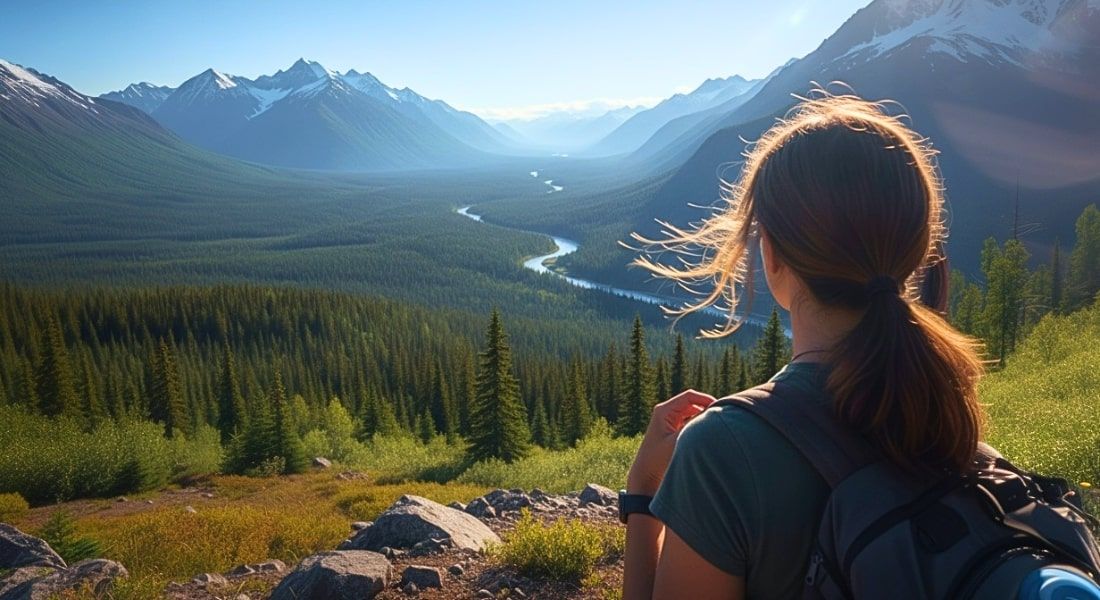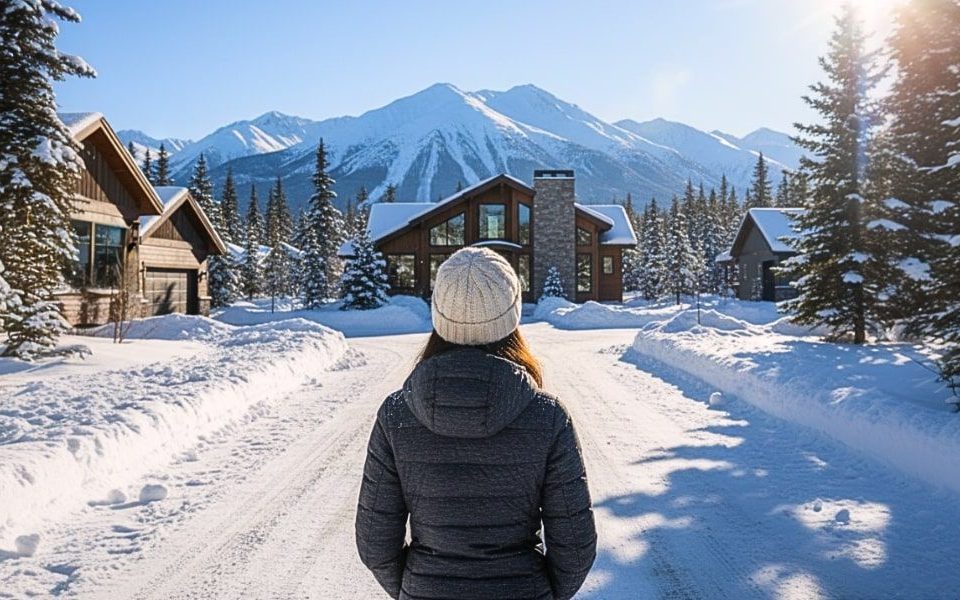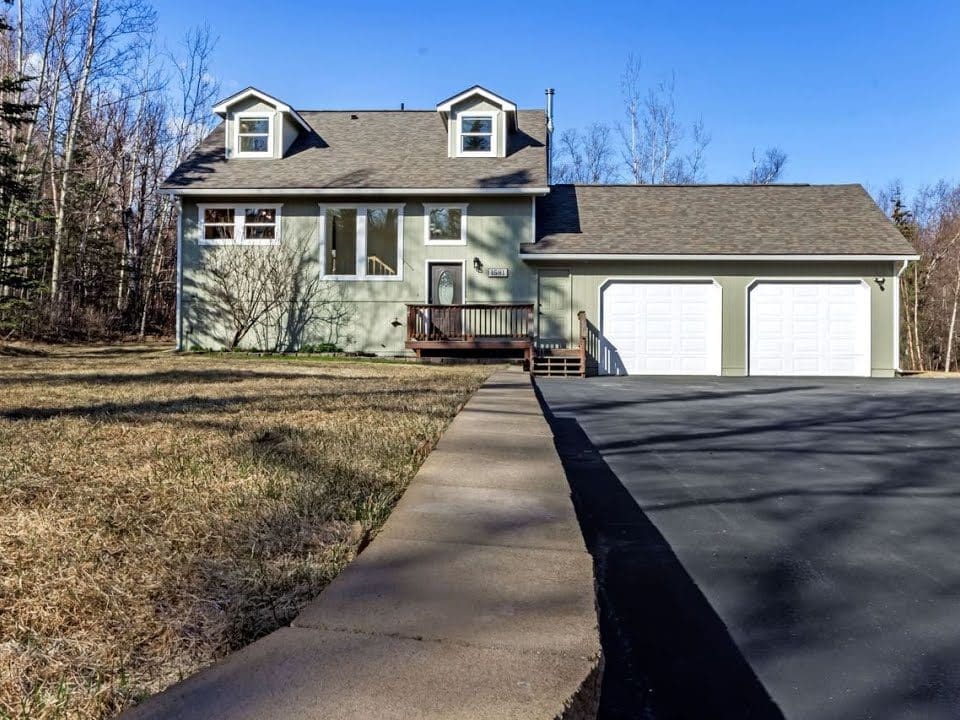
If you’ve ever dreamed about moving north, you’ve probably imagined endless acres of untouched land. You’re dreaming of space to breathe, room to roam, maybe even that quiet cabin tucked between spruce and mountains. That’s the image most folks from the Lower 48 carry with them. Alaska looks massive on the map. But the reality on the ground surprises almost everyone.
I’ve lived here my whole life, and here’s what I’ve learned: For all its vastness, Alaska has about as much accessible private land as the state of Massachusetts. The rest? You’re looking at national parks, state land, or tribal land; beautiful, but not for sale.
Why Private Land Is So Limited
After Alaska became a state, the government set aside huge sections for public use, conservation, and indigenous corporations. What’s left for private ownership is a fraction of the total area. It’s small, scattered, and often spoken for.
In the Palmer–Wasilla area, properties larger than two acres are rare. Most listings are smaller, and when something with real elbow room hits the market, it goes fast. Once you filter out government and corporate holdings, about 90% of the listings people dream about just don’t exist.
It’s not that Alaska is crowded; it’s that geography, infrastructure, and ownership history limit the available land to buy and build on.
The Realities of Owning Land in Alaska
Even when you find the right piece of land, it comes with its own set of challenges.
- Access: Many rural parcels don’t have maintained roads. Getting there might mean snow machines in winter or mud tires in breakup season.
- Utilities: Most properties rely on wells, septic systems, and individual power hookups. Municipal water is rare outside small-town centers.
- Weather: Winter brings snow loads, ice buildup, and extreme temperature swings that test every part of a property, from driveways to roofs.
Most folks don’t realize until they’re up here that a five-acre dream lot might be less about space and more about stamina. Before falling in love with a property, make sure you understand what it takes to maintain it through a full Alaskan winter.
A Story That Happens Every Year
Every winter, I hear from newcomers who bought land online or sight unseen. They arrive full of excitement. Then they find problems. Maybe it sits on a steep slope. There might not be an access road. For some, the property lies in an area where you can’t even drill a well.
One couple from Oregon comes to mind. They bought a five-acre parcel near Willow because it looked perfect in photos: mountain views, birch trees, and peace. But when they arrived, they realized the “driveway” was actually a snowmobile trail, and their lot flooded each spring.
A year later, they sold it and found a smaller, one-acre property near Palmer. It has a well, road access, and neighbors who plow. “It’s not what we pictured,” they told me, “but it’s the Alaska we can actually live in.”
That’s the real Alaskan dream: finding a piece of land that lets you live here, not just survive here.
Thinking about a move north? Explore what’s possible with The Valley Market Team.
How to Look Smarter When You Buy
If you’re planning a move north, here’s what seasoned locals do differently:
- Work with a local expert early. Someone who knows soil, access roads, and zoning, not just listings.
- Understand septic and water tests. In Alaska, good soil can matter more than good views.
- Ask about snow and wind. A lot that’s gorgeous in August might be buried or windblown by January.
These aren’t just technical details; they’re the things that determine whether your Alaskan land becomes a home or a headache. Lean on local experience before you buy, not after.
The Real Lesson About Alaska Land
The dream of wide-open Alaska is real; it just comes in smaller, smarter pieces than most expect. The land that works best for living isn’t endless wilderness. You need the right acre in the right place, with the right setup for the life you actually want.
Dream big, but plan smart. That’s how people thrive up here.
FAQs About Buying Land in Alaska
Is it hard for nonresidents to buy land in Alaska?
No, out-of-state buyers can purchase property freely. The challenge isn’t the paperwork; it’s understanding local terrain, zoning, and access. Working with a local real estate professional helps bridge that knowledge gap.
What are the common surprises for newcomers buying land?
Most are shocked by the lack of utilities and maintained roads. Many parcels look great online but require thousands in improvements before they’re livable.
Can you really go off-grid in Alaska?
Yes, but it’s work. Solar setups and generators are common, but winter limits make full off-grid living tough without planning. Good equipment and location make all the difference.
Where are the best places to buy small acreage near Palmer or Wasilla?
Look for land near established roads, such as Knik-Goose Bay or Palmer Fishhook. These areas balance privacy with access to services and power lines.
How much should I budget for developing raw land?
Expect to spend $30,000–$60,000 or more for a well, septic, and driveway. Costs vary by soil type and slope. It’s always wise to test before you buy.
What’s the best season to look for land?
Late spring and early summer show the land’s true condition. You’ll see drainage, soil, and sunlight before snow hides the details.
What happens if I buy without seeing it first?
It’s risky. Many parcels sold sight unseen turn out to be inaccessible or unsuitable for building. A short visit can save years of frustration.
Why do locals say the right acre beats five wrong ones?
Because in Alaska, usable space matters more than total space. The right lot provides comfort and safety throughout every season.
Ready to Begin?
If Alaska’s calling, take the time to learn about its land. The right property isn’t about acreage; it’s about fit. Let’s find something that fits your plan. Reach out now to start exploring Alaska real estate.



